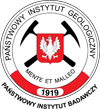The term Jurassic comes from the word “jura”, which in Celtic means "overgrown mountain.” It was assigned to a mountainous region on the French-Swiss border. Alexander von Humboldt called the rocks found in that region Jurassic limestones. Years later, the word Jurassic was adopted as a new geological period.
Paleogeography
The supercontinent Pangea progressed to break up in the early Jurassic. The central part of the continent saw the formation of several rift zones, one of which later became the Atlantic Ocean.
In the Middle Jurassic, the still-connected South America and Africa began to separate from North America, opening up the Gulf of Mexico. The Tethyean Ocean reached its full size in the Jurassic.
Rifting also took place in the south, breaking the former Gondwana into two blocks: African-American and Australia, and Antarctica with the Indian Peninsula (Deccan), beginning to form the Indian Ocean.
Climate
The Jurassic climate was warmer than today, with less seasonal variation. The tropical and subtropical climates extended further north and south, with temperate climates at the poles.
Life on Earth
Life in the sea
The fracturing of Pangea created new coastal lines. The lack of glacial caps resulted in high global sea level, creating shallow seas in lower continental areas. New predators appeared in these seas, such as crabs, snails, sea urchins, and various vertebrates. This forced the prey to develop new survival strategies, like buddowing in sediments or sharp spikes. The rapidly evolving ammonites later became excellent index fossils, helping to correlate rocks. The reef builders were mussels called rudists, sponges, polychaetes, and algae.
Archosaurs and the great amphibian extinction
On land, dinosaurs diversified and became very common in the Jurassic. During that time, the largest animals to ever grace the lands — sauropods — were numerous. The large herbivores were predated on by new large carnivores such as Allosaurs.
At the same time, their sister clade, Pseudosuchians, was outcompeted and had to find new ecological niches. They moved to water environments previously ruled by amphibians. Reptiles invading the aquatic niches led to the extinction of most large amphibians.
First birds
The first avians evolved from small, feathered dinosaurs. To achieve active flight, early birds reduced body size and weight thanks to hollow (pneumatic) bones and replacing teeth with lighter beaks. Forms almost identical to modern birds appeared by the end of the Jurassic.
Jurassic mammals
The Jurassic mammals were usually omnivorous and herbivorous, carnivores were rare. By the Middle Jurassic, mammals had become viviparous (giving birth to live young), paving the way for all modern placentals. One of the oldest known representatives of placentals is a tiny Juramaia.
Flora
A lot of the land was covered by conifer forests. Numerous new species of araucarias (monkey puzzle trees) and deciduous gymnosperms like cycads and ginkgo appeared. In subtropical and tropical areas, alongside cycads and bennettitales (which experienced their maximum diversity in the Jurassic), ferns releasing seeds and spores also became an important component of the flora.
Do you know...
Forest fires were frequent in the Jurassic, leaving a large amount of charcoal in Jurassic rocks.
















